Art and Intellectual Disability
Disorder Characteristics
Intellectual disability involves impairments of general mental abilities that impact adaptive functioning in three domains, or areas. These domains determine how well an individual copes with everyday tasks:
www.psychiatry.org.
Intellectual disability involves impairments of general mental abilities that impact adaptive functioning in three domains, or areas. These domains determine how well an individual copes with everyday tasks:
- The conceptual domain includes skills in language, reading, writing, math, reasoning, knowledge, and memory.
- The social domain refers to empathy, social judgment, interpersonal communication skills, the ability to make and retain friendships, and similar capacities.
- The practical domain centers on self-management in areas such as personal care, job responsibilities, money management, recreation, and organizing school and work tasks.
www.psychiatry.org.

An Intellectual disability is:
· a disability affecting cognition
· people with intellectual disability may have difficulties with learning, communication, daily living skills, information processing, social functioning and problem solving
· an intellectual disability which leads to severe or profound activity limitations
· intellectual disabilities are life-long, and must be identified before the age of 18
· examples of intellectual disabilities include Down Syndrome, Fragile X Syndrome, Prader-Willi Syndrome, Angelman Syndrome
http://works.bepress.com/susanne_bruyere/16/
http://pubsites.uws.edu.au/ndco/what/types.htm
· a disability affecting cognition
· people with intellectual disability may have difficulties with learning, communication, daily living skills, information processing, social functioning and problem solving
· an intellectual disability which leads to severe or profound activity limitations
· intellectual disabilities are life-long, and must be identified before the age of 18
· examples of intellectual disabilities include Down Syndrome, Fragile X Syndrome, Prader-Willi Syndrome, Angelman Syndrome
http://works.bepress.com/susanne_bruyere/16/
http://pubsites.uws.edu.au/ndco/what/types.htm
The Many Faces of Intellectual Disabilities
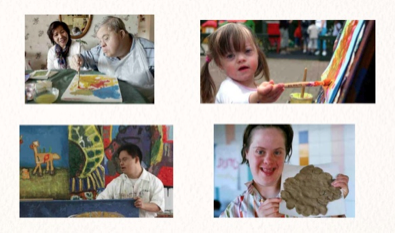
Down Syndrome:
Down syndrome is a genetic disorder caused when abnormal cell division results in extra genetic material from chromosome 21. This genetic disorder, which varies in severity, causes lifelong intellectual disability and developmental delays, and in some people it causes health problems.
Down syndrome is the most common genetic chromosomal disorder and cause of learning disabilities in children.
Better understanding of Down syndrome and early interventions can greatly increase the quality of life for children and adults with this disorder and help them live fulfilling lives.
http://www.mayoclinic.org/diseases-conditions/down-syndrome/basics/definition/con-20020948
Down syndrome is a genetic disorder caused when abnormal cell division results in extra genetic material from chromosome 21. This genetic disorder, which varies in severity, causes lifelong intellectual disability and developmental delays, and in some people it causes health problems.
Down syndrome is the most common genetic chromosomal disorder and cause of learning disabilities in children.
Better understanding of Down syndrome and early interventions can greatly increase the quality of life for children and adults with this disorder and help them live fulfilling lives.
http://www.mayoclinic.org/diseases-conditions/down-syndrome/basics/definition/con-20020948
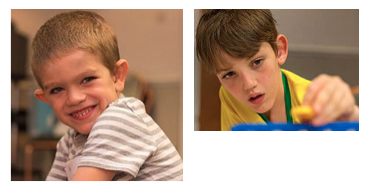
Fragile X Syndrome:
Fragile X syndrome is a genetic condition that causes a range of developmental problems including learning disabilities and cognitive impairment. Usually, males are more severely affected by this disorder than females.
Affected individuals usually have delayed development of speech and language by age 2. Most males with fragile X syndrome have mild to moderate intellectual disability, while about one-third of affected females are intellectually disabled. Children with fragile X syndrome may also have anxiety and hyperactive behavior such as fidgeting or impulsive actions. They may have attention deficit disorder (ADD), which includes an impaired ability to maintain attention and difficulty focusing on specific tasks. About one-third of individuals with fragile X syndrome have features of autism spectrum disorders that affect communication and social interaction. Seizures occur in about 15 percent of males and about 5 percent of females with fragile X syndrome.
Most males and about half of females with fragile X syndrome have characteristic physical features that become more apparent with age. These features include a long and narrow face, large ears, a prominent jaw and forehead, unusually flexible fingers, flat feet, and in males, enlarged testicles (macroorchidism) after puberty.
http://ghr.nlm.nih.gov/condition/fragile-x-syndrome
Fragile X syndrome is a genetic condition that causes a range of developmental problems including learning disabilities and cognitive impairment. Usually, males are more severely affected by this disorder than females.
Affected individuals usually have delayed development of speech and language by age 2. Most males with fragile X syndrome have mild to moderate intellectual disability, while about one-third of affected females are intellectually disabled. Children with fragile X syndrome may also have anxiety and hyperactive behavior such as fidgeting or impulsive actions. They may have attention deficit disorder (ADD), which includes an impaired ability to maintain attention and difficulty focusing on specific tasks. About one-third of individuals with fragile X syndrome have features of autism spectrum disorders that affect communication and social interaction. Seizures occur in about 15 percent of males and about 5 percent of females with fragile X syndrome.
Most males and about half of females with fragile X syndrome have characteristic physical features that become more apparent with age. These features include a long and narrow face, large ears, a prominent jaw and forehead, unusually flexible fingers, flat feet, and in males, enlarged testicles (macroorchidism) after puberty.
http://ghr.nlm.nih.gov/condition/fragile-x-syndrome
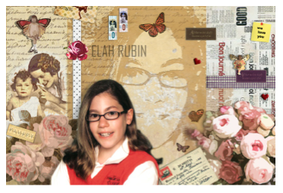
Prader-Willi Syndrome:
Prader-Willi (PRAH-dur VIL-e) syndrome is a rare disorder present at birth that results in a number of physical, mental and behavioral problems. A key feature of Prader-Willi syndrome is a constant sense of hunger that usually begins at about 2 years of age.
People with Prader-Willi syndrome want to eat constantly because they never feel full (hyperphagia) and usually have trouble controlling their weight. Many complications of Prader-Willi syndrome are due to obesity.
http://www.mayoclinic.org/diseases-conditions/prader-willi-syndrome/basics/definition/con-20028982
Prader-Willi (PRAH-dur VIL-e) syndrome is a rare disorder present at birth that results in a number of physical, mental and behavioral problems. A key feature of Prader-Willi syndrome is a constant sense of hunger that usually begins at about 2 years of age.
People with Prader-Willi syndrome want to eat constantly because they never feel full (hyperphagia) and usually have trouble controlling their weight. Many complications of Prader-Willi syndrome are due to obesity.
http://www.mayoclinic.org/diseases-conditions/prader-willi-syndrome/basics/definition/con-20028982
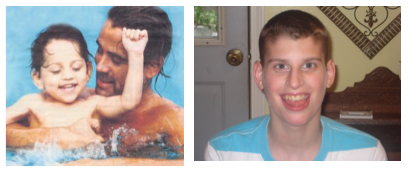
Angelman Syndrome:
Angelman syndrome is a genetic disorder that affects the nervous system and causes severe physical and intellectual disability.
It's relatively rare, occurring in around 1 in 16,000 people.
Typical characteristics of Angelman syndrome include:
Angelman syndrome is a genetic disorder that affects the nervous system and causes severe physical and intellectual disability.
It's relatively rare, occurring in around 1 in 16,000 people.
Typical characteristics of Angelman syndrome include:
- delayed development (usually noticeable from 6-12 months of age)
- severe language impairment with little or no speech
- movement and balance problems (ataxia)
- frequent seizures (epilepsy) in around 85% of cases
- a small head size (microcephaly)
- sociable behaviour with frequent smiling
Art Activities
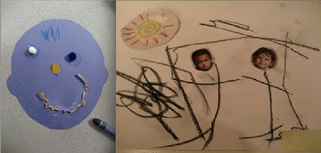
Art Activities for High School students with Intellectual disabilities:
Many virtues have been attributed to art and how it can contribute to our lives. The therapeutic value of art has been explored and legitimized. Some believe art has the ability to heal, transcend and transform. It has been found to come from the right side of the brain and open up our creativity and ability to use our intuition. Regardless of the benefits of art, we know it is fun, it engages, and gratefully it is one medium where there is no right or wrong answer. Art is a way to work with children who have disabilities toward the achievement of all sorts of goals. To name a few:
Eye-hand coordination
Fine motor skills
Color recognition
Sequential thought
Matching
Visual acuity
Action concepts
https://angelmannetwork.wordpress.com/angelman-syndrome/therapy-for-as
Since each of the syndromes discussed here (Down Syndrome, Fragile X syndrome, Prader-Willi Syndrome, and Angelman Syndrome) present with varying levels of Intellectual disability, fine and gross motor skill problems, and muscle weakness, these Art Activities were developed to assist in increasing function in each of these areas.
Many virtues have been attributed to art and how it can contribute to our lives. The therapeutic value of art has been explored and legitimized. Some believe art has the ability to heal, transcend and transform. It has been found to come from the right side of the brain and open up our creativity and ability to use our intuition. Regardless of the benefits of art, we know it is fun, it engages, and gratefully it is one medium where there is no right or wrong answer. Art is a way to work with children who have disabilities toward the achievement of all sorts of goals. To name a few:
Eye-hand coordination
Fine motor skills
Color recognition
Sequential thought
Matching
Visual acuity
Action concepts
https://angelmannetwork.wordpress.com/angelman-syndrome/therapy-for-as
Since each of the syndromes discussed here (Down Syndrome, Fragile X syndrome, Prader-Willi Syndrome, and Angelman Syndrome) present with varying levels of Intellectual disability, fine and gross motor skill problems, and muscle weakness, these Art Activities were developed to assist in increasing function in each of these areas.
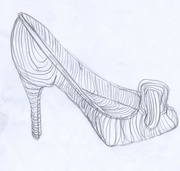
The shoe
Present students a piece of paper with the outline of a shoe, the students are then asked to draw cross contour lines. These are lines, which travel across the form, staying within the outline. Cross contour lines can be horizontal, vertical, or diagonal. This is a fun project that will help with fine motor skills and hand dexterity.
Present students a piece of paper with the outline of a shoe, the students are then asked to draw cross contour lines. These are lines, which travel across the form, staying within the outline. Cross contour lines can be horizontal, vertical, or diagonal. This is a fun project that will help with fine motor skills and hand dexterity.

Paint by water balloon
A large canvas or paper is positioned either on a large wall (make sure plastic protects the floor) or on the floor of a large classroom. The activity can also be done outdoors in good weather. Balloons are then partially filled with paint – different colors in each balloon. The student uses their entire body to toss the paint filled balloons at the paper/canvas creating a multicolored abstract image.
This art activity allows adolescence to express themselves through paint, to exercise their muscles, and to refine their gross motor skills.
A large canvas or paper is positioned either on a large wall (make sure plastic protects the floor) or on the floor of a large classroom. The activity can also be done outdoors in good weather. Balloons are then partially filled with paint – different colors in each balloon. The student uses their entire body to toss the paint filled balloons at the paper/canvas creating a multicolored abstract image.
This art activity allows adolescence to express themselves through paint, to exercise their muscles, and to refine their gross motor skills.

The Farm, Zoo, Pond, or Ocean project
Students are presented with a choice of scenes. Each scene is an animal habitat the student may be familiar with:
a farm scene, zoo scene, the ocean, or a pond. It is the students task to populate these images with animals that suite the habitat’s theme by cutting the images out of magazines such as national geographic. Each day the student can pick out different animals to add to their collage and different scenes to past them on. This art activity helps with fine motor skills and dexterity (using the scissors to cut out Images from magazines), while assisting with animal identification and vocabulary.
Students are presented with a choice of scenes. Each scene is an animal habitat the student may be familiar with:
a farm scene, zoo scene, the ocean, or a pond. It is the students task to populate these images with animals that suite the habitat’s theme by cutting the images out of magazines such as national geographic. Each day the student can pick out different animals to add to their collage and different scenes to past them on. This art activity helps with fine motor skills and dexterity (using the scissors to cut out Images from magazines), while assisting with animal identification and vocabulary.
|
|
|

App Crawler
http://appcrawlr.com/ios-apps/best-free-apps-down-syndrome
http://appcrawlr.com/ios-apps/best-apps-intellectual-disabilities
http://appcrawlr.com/ios-apps/best-free-apps-down-syndrome
http://appcrawlr.com/ios-apps/best-apps-intellectual-disabilities

